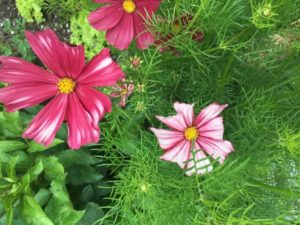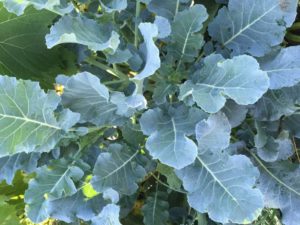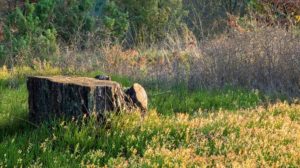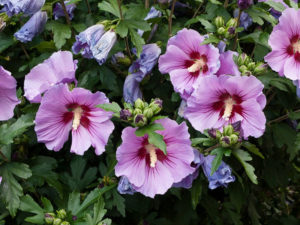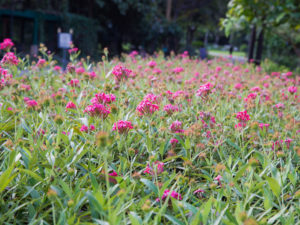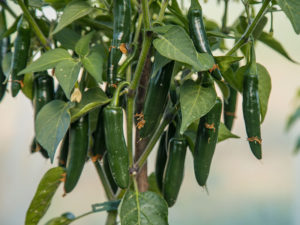The Japanese umbrella pine is a very hardy tree that can stand proud and beautiful in almost any growing condition.
Its scientific name is sciadopitys verticillata, which is a bit of a mouthful, to say the least.
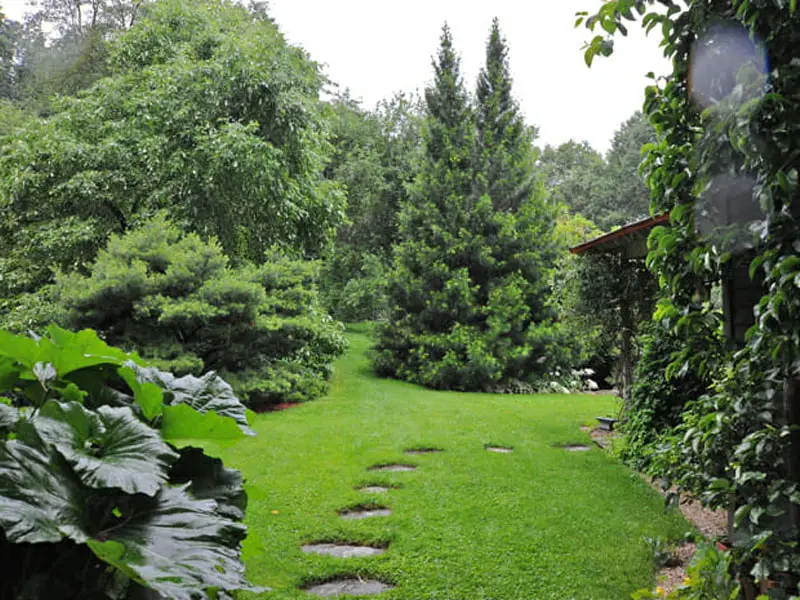
This striking tree is native to Japan and is called “koya-maki” by the locals.
It is one of Japan’s most sacred trees, and adult trees are highly sought after as some trees may take as long as 100 years to reach maturity.
These slow-growing trees are expensive and striking conifers that most people would love to landscape their land with.
| Scientific Name | Sciadopitys verticillata |
| Common Names | Koya-mak, Japanese umbrella pine |
| Hardiness | Hardiness zones 5 through to 8a |
| Indoor or Outdoor Plant? | Outdoor |
| Sun Exposure | Full sun, partial sun, partial shade |
| Water | Water when the top two inches of soil become dry |
| Size | Up to 30 feet tall |
| Soil Type | Organically rich soil |
| Soil pH | 4.5 to 6 |
| Flower | Pines |
| Growing Difficulty Level | Easy |
Japanese Umbrella Pine Appearance and Characteristics
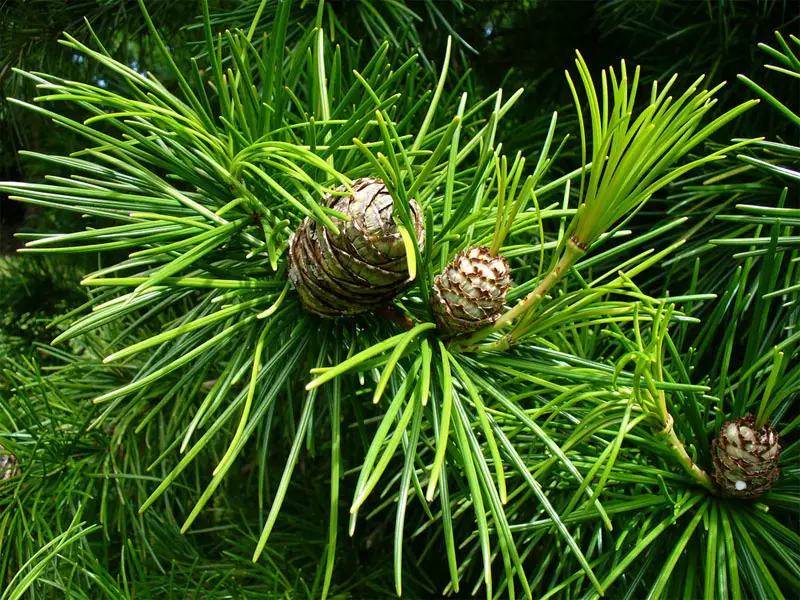
This tree has such a unique and unusual texture.
It has long pine needles that are between two and five inches long and look almost synthetic.
The tree traditionally grows in a sphere shape, although you can find some variations growing in a more rounded formation.
This tree is a slow grower, so if you expect it to turn into a tall, dominant part of your landscape, I am afraid it won’t be such a prominent feature for many years.
It also takes quite a while to produce pines, and when they do appear, they will be fairly small, measuring between two to four inches long.
Japanese Umbrella Pine Growing Guide
It is important to note that the Japanese umbrella pine tree is particularly suited to cooler climates with long mild winters.
These easy-going plants thrive in mild weather, so that means that if it’s a little too hot or too cold for their liking, they will need some extra tender loving care.
Follow the advice in this article to keep your trees healthy all year round.
Top Tip: Before I go into specific care details, it is important to note that where you plant the tree is particularly important for keeping this tree healthy.
When landscaping your yard, plant the tree in an area with some shade and protection from strong winds and frost.
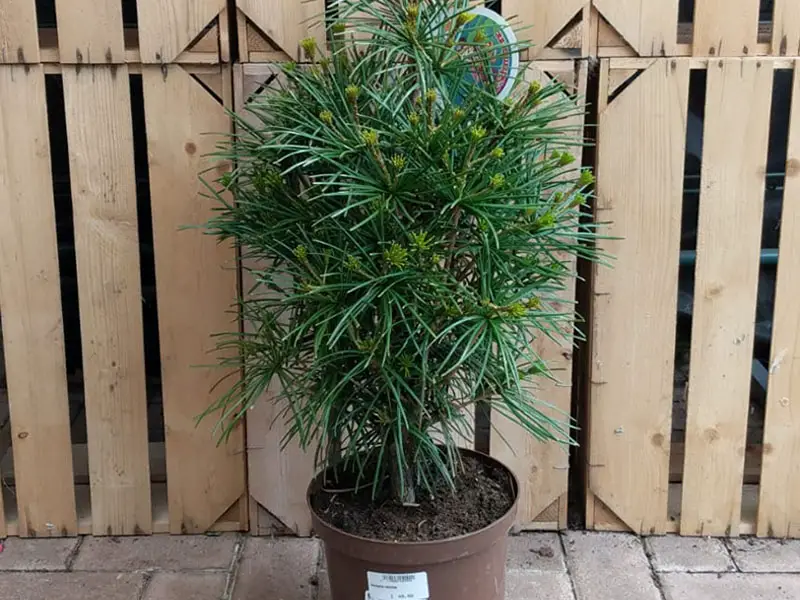
Water
Japanese umbrella pine trees need to be watered once every week or whenever the first few inches of soil are completely dry.
This should be done until the tree is completely established, which could take upwards of 100 years to reach maturity.
If the tree that you are caring for is a permanent feature in your backyard, have a look at the color of its trunk and the texture of the bark.
If the bark is reddish-brown in color and peels easily, then the tree is established and mature and will not need to be watered this frequently.
Most people will not have an already established tree in their yard, so I recommend sticking to a regular watering schedule to ensure the tree is getting enough water.
Overwatering the tree will be extremely detrimental to the plant, so adjust your watering schedule accordingly during heavy rainfall.
Light
You will be pleased to learn that the Japanese umbrella pine tree can thrive in a variety of light conditions. Ideally, you want your tree to stay in full to partial sunlight all year round.
You may need to provide your tree with shade if you are in an area with long hours of strong sunlight to stop it from drying out.
Soil
Plant this tree in well-drained soil that is moist and full of organic matter.
To keep the soil rich and fertile, you can add compost and fertilizers to the soil once or twice every year, depending on the needs of the plant.
It is also wise to test the soil’s pH levels monthly to ensure the soil is within the recommended ranges.
Temperature and Humidity
Extreme soil temperatures could burn the roots of the tree.
This is a particular issue for people growing the trees in bonsai containers, as the containers overheat very quickly.
Areas with high humidity levels and cool breezy temperatures are the best places for Japanese umbrella pine trees to grow.
If you live in USDA zones 5 to 8a, or an area of the world with similar temperatures, then your tree should grow well.
Potting and Re-Potting
Planting the tree directly into the soil is ideal so that it has plenty of room to grow and establish strong roots.
If you are planting a new tree, make sure you mix some rotten manure or high-quality compost into the soil before planting the tree to give it an extra boost.
Propagating and Pruning
If you fancy a challenge, you can propagate the Japanese umbrella pine tree using cuttings of half ripened wood during the summer months.
You won’t need to do much when it comes to pruning the tree as it grows in such a beautiful way naturally; however, you can shape the tree so that it is more rounded or cone-like if you wish to do so.
Advantages of Growing Japanese Umbrella Pine
These trees must grow in very rich soil that is full of organic matter and nutrients, which means that growers have to stay on the ball and keep their soil well fertilized.
Well fertilized soil that is full of organic matter is hugely beneficial for many reasons.
Plants become more resilient to pests and diseases when the soil is full of organic matter, which means that the trees need less human intervention and fewer chemical treatments.
Japanese Umbrella Pine Pests, Diseases, and Problems
Fortunately, these trees attract very few pests and diseases, which means less work for you! As long as the tree isn’t overwatered and the soil is kept rich and nourished, then you shouldn’t run into any problems.
Japanese Umbrella Pine Seeds
Growing these trees from seedlings is easier than you think as long as you purchase high-quality seeds from a reputable distributor. Alternatively, you can purchase seeds at your local garden center or from a specialist store.

FAQs
How tall will a Japanese umbrella pine tree get?
Fully matured Japanese umbrella pine trees vary in size greatly. They can grow up to 40 feet tall, or their growth may stop at around 25 feet and anywhere in between.
Do umbrella pines lose their needles?
The Japanese umbrella pine tree will lose and renew its needles, but surprisingly, each needle has a two to three-year lifespan.
How should I prune Japanese umbrella trees?
Japanese umbrella pine trees are very easy to prune. You should trim back any overcrowded areas of the tree to keep it looking aesthetically pleasing and to encourage an even growth pattern.
Are Japanese umbrella pine trees deer resistant?
Yes, Japanese umbrella pine trees are very deer resistant. Deers are less interested in Japanese umbrella pines than other trees in the area and will, therefore, stay away from these trees.
Are Japanese umbrella pine trees easy to look after?
Japanese umbrella pine trees are not difficult to look after.
They can grow in USDA hardiness zones 5 through to 8a and can thrive in numerous light conditions.
The only thing you should remember is that they don’t like extreme heat or dry soil, so keeping them well shaded and their soil moist and fertile is vital.


